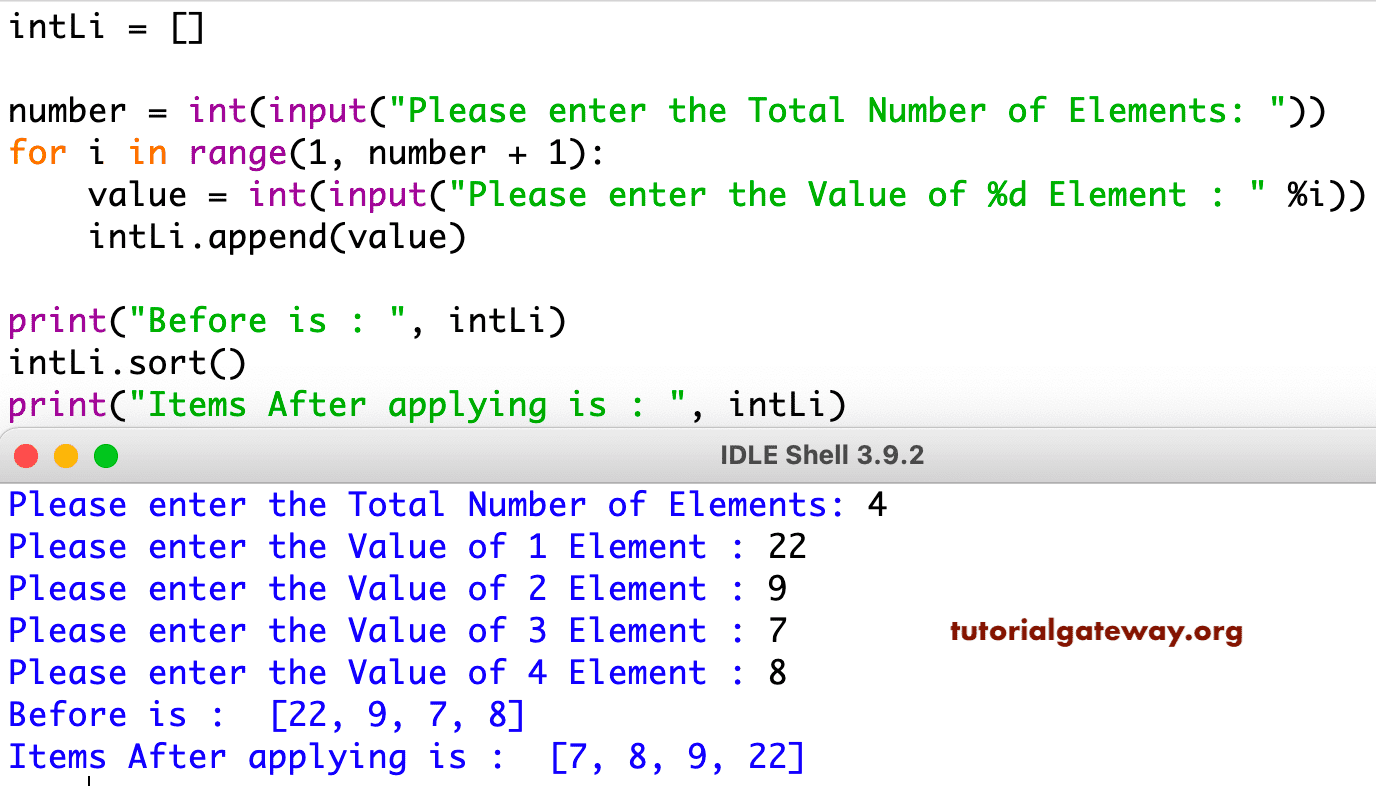

In this document, we explore the various techniques for sorting data using Python. There is also a sorted() built-in function that builds a new sorted list from an iterable. # Create a data list, each list element is a python dictionary object. Python lists have a built-in list.sort() method that modifies the list in-place. sort() can accept a boolean argument called. # Define a function which return the python dictionary object's score value. You can sort a list in ascending or descending order using list.sort() or sorted(list). # The sorted function also supports the key argument. # The sorted function also support reverse argument. The list.sort() method can only sort lists, while sorted() method can sort any data structures.and list.sort () will change the original list. This will sort by the returned value of the len. Again, we can do this by using the key parameter and passing in the len callable. List2alex,zampa,micheal,jack,milton sort the List2 by descending order of its length List2. Now the sort () function will change the order from increasing to decreasing by passing reverseTrue as an argument of the sort () method. First, we will take the list of tuples and arrange them in unsorted order. In this example, we’ll sort a list of lists by their length, in ascending order (from shortest to longest). Sort the list based on length: Lets sort list by length of the elements in the list. To sort the list of tuples by descending order we can easily use the sort () function in Python. As usual, test the performance using data from your use case. If a is small, then this could be faster than setting up a dict. That's not necessarily the same number as the number of elements in a.
PYTHON SORT LIST HOW TO
Use the key parameter to pass the function name to be used for comparison instead of the default < operator. In this section, you’ll learn how to sort a list of lists in Python using the. Sorts are normally said to be O (N log N), where N is the number of elements in the list.

# Define a function, this function will return the first element of the input x object. Sort list elements use the list object’s built-in method sort. Python Dictionaries Access Items Change Items Add Items Remove Items Loop Dictionaries Copy Dictionaries Nested Dictionaries Dictionary Methods Dictionary Exercise Python If.Else Python While Loops Python For Loops Python Functions Python Lambda Python Arrays Python Classes/Objects Python Inheritance Python Iterators Python Scope Python Modules Python Dates Python Math Python JSON Python RegEx Python PIP Python Try.1.


 0 kommentar(er)
0 kommentar(er)
